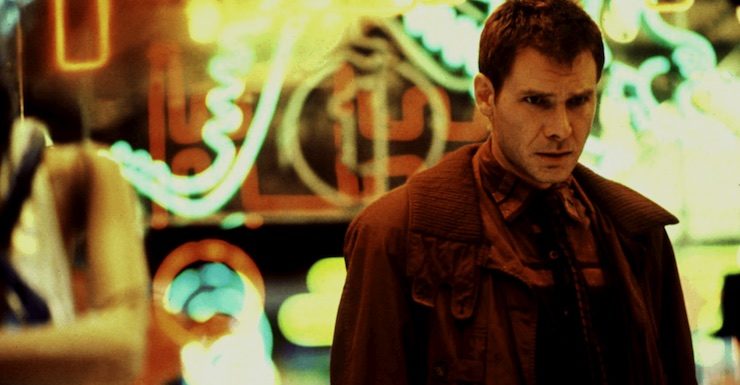I watched Blade Runner for the first time this week. Since I have apparently been living in a cave for the past few decades, I thought that Blade Runner was kind of like Tron but with more Harrison Ford, and less neon, and maybe a few more tricky questions about What Is The Nature Of Man.
That is the movie I was expecting.
That is not the movie I saw.
I told a lot of people that I was going to watch Blade Runner for the first time, because I know that people have opinions about Blade Runner. All of them gave me a few watery opinions to keep in mind going in—nothing that would spoil me, but things that would help me understand what they assured me would be a Very Strange Film.
None of them told me the right things, though. So, in case you are like me and have been living in a cave and have never seen Blade Runner before and are considering watching it, I will tell you a little about it.
There are cops, and there are little people.
There is a whole class of slaves. It is illegal for them to escape slavery. The cops are supposed to murder the slaves if they escape, because there is a risk that they will start to think they’re people. But the cops know that the slaves are not people, so it’s okay to murder them. The greatest danger, the thing the cops are supposed to prevent, is that the slaves will try to assimilate into the society that relies on their labor.
Assimilation is designed to be impossible. There are tests. Impossible tests with impossible questions and impossible answers. The tests measure empathy. It is not about having enough empathy, but about having empathy for the correct things. If you do not have enough empathy for the correct things, you will be murdered by a cop who does have empathy for the correct things.
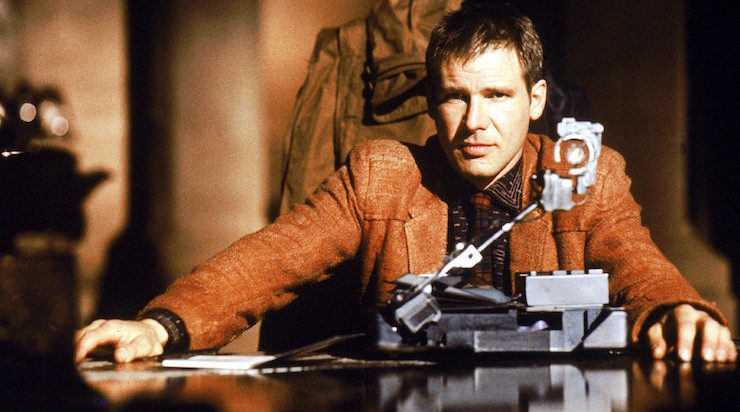
In Blade Runner, an absurdly young Harrison Ford is a hard-boiled, world-weary kind of man named Deckard, and he is given a choice. He can be exactly as small as everyone is, or he can catch some escaped slaves for the police. He decides to catch the escaped slaves.
Except that ‘catch’ means ‘retire,’ and ‘retire’ means ‘murder.’
Deckard feels that he has no choice in this matter. He says it himself, and the person giving him the choice confirms that he is correct: no choice. But of course, there is always a choice. Certainly, the escaped slaves who he is chasing see that there is a choice. He can be power or he can be vulnerable to power. He chooses power. And power means murder.
The first such murder we witness is that of a woman who escaped slavery and came to Earth. She has found herself a job. It’s a degrading job, a job that even the hard-boiled, world-weary Deckard flinches away from watching. But it’s a job. She is participating in society. She is working. She’s doing the things that she has to do in order to be a part of the world that she risked everything to reach.
Deckard comes to her workplace. He finds her there, and he knows what she is, and she runs away from him because she knows what cops do to women like her. He chases her through the street and corners her. He aims his gun at her through a crowd of people. He squints. He takes a second too long to decide whether to shoot. She runs again.
(Nobody tells you about that part, when you tell them you’re about to watch Blade Runner for the first time. They tell you about all the different versions, and they tell you about the ambiguity of the ending, and they tell you about the fact that all the effects are practical effects. But nobody tells you about the part where a cop aims a loaded firearm into a crowd of people and tries to decide whether it’s worth risking their lives in order to murder an escaped slave.)
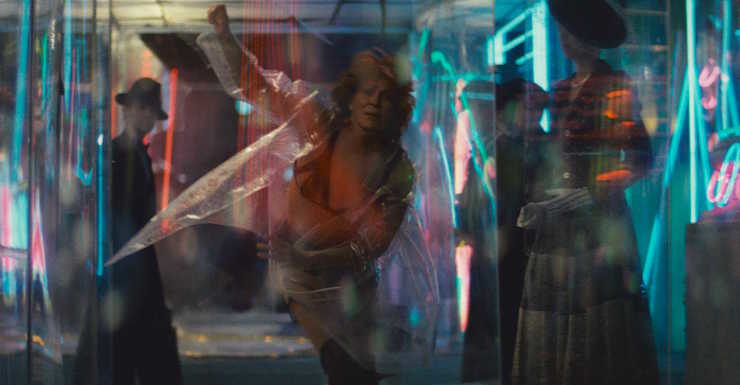
She runs, and then he corners her again, and then he shoots her. He shoots her in the back while she’s running away from him, running from death with so much panic that she crashes right through a shopfront window. Glass rains down around her, and she is dead. Not a dead person, of course. Because, as we have been told, she is not a person—they are not people. But she is dead, and when death happens in public, people will come to look. A small crowd begins to gather.
And then a police vehicle hovers overhead, and the police vehicle repeats the same two words over and over, in the same tone the crossing signal uses to prompt those who can’t see the walk sign: Move on, move on, move on.
So the crowd moves on. The story moves on. And Deckard moves on.
He still has work to do. One down. The rest to go.
He murders other escaped slaves before the end of the film. He finds where they are hiding, and he murders them.
It is important, in the world of the film, to remember that the things he is murdering are not people. That it is their own fault for seeking free lives. That the cops are just doing their jobs.
It is important to remember to have empathy for the right things.
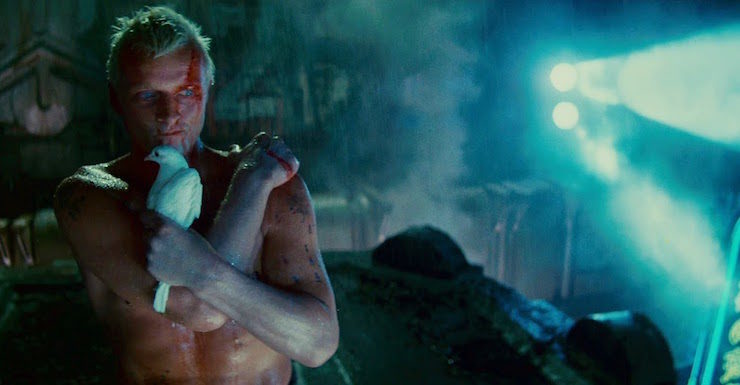
There is one escaped slave who Deckard does not murder. She asks him if he thinks she could escape to the North, and he says no. Whether that is true or not, we as the audience do not get to find out, because she does not escape. She does not escape because he decides to keep her. He is asked to murder her, and instead he decides to keep her for his own.
(Nobody warns you about that part when you tell them you’re about to watch Blade Runner for the first time. They tell you to watch for the origami, and they tell you that you won’t believe the cast, and they tell you about the celebrities who have been asked to take the Voight-Kampff test. But nobody warns you about the part where a cop convinces a slave that she cannot escape unless he is allowed to keep her. Nobody warns you about that part.)
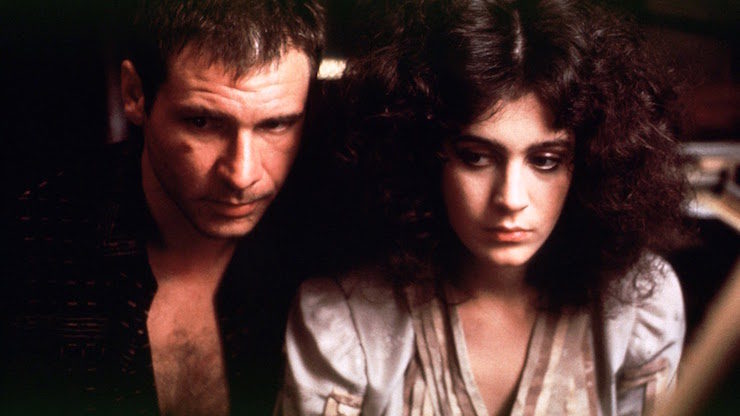
Blade Runner does not ask us to sympathize with Deckard. At least, not in the version I watched, which was the Final Cut. I am told that there are other cuts which were deemed more palatable to theatre audiences at the time of release. Those cuts, I am told, reframe the man who chases a terrified escaped slave through the streets of a futuristic Los Angeles and then puts bullets into her back. They allow us to believe that he is a good guy doing a hard but necessary job, and that the hard but necessary job is hard because he is good. They allow us to believe that it is possible to be a good guy while doing that kind of a job.
This is a thing that it is very tempting to believe. It is a thing that we are accustomed to believing. It is as familiar as coming home.
Most people told me the same thing, when I said that I was going to come out of my cave and watch Blade Runner for the first time. When they were giving me their watery opinions so I’d be prepared for what I was about to see, they all said: “It’s a Very Strange Movie.”
They weren’t wrong. Not exactly. Not in the thing that they meant, which is that it is bizarre. They weren’t wrong about that. It is bizarre. The movie itself is ambiguous and nuanced and asks a lot of the audience. Asks too much of the audience, if you agree with the studio executives who released the original, theatrical cut. It is baffling and beautiful and terrible and tempting. It’s Surrealist Science Fiction Pulp Noir—it has to be weird and unsettling. That’s the genre.
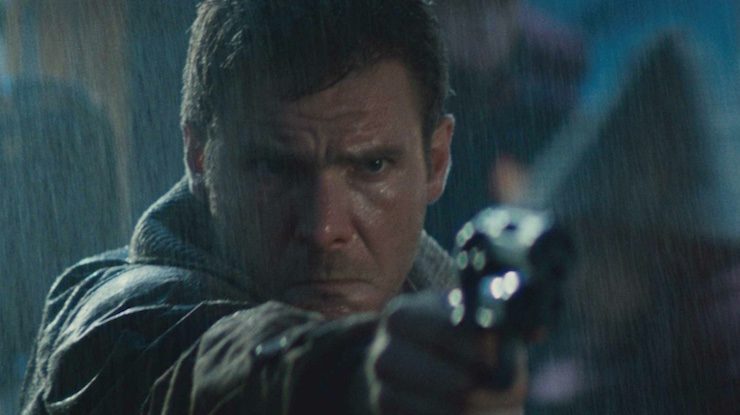
But I would not call the world of Blade Runner strange, because it’s the opposite of strange. It’s familiar. If you subtract the flying cars and the jets of flame shooting out of the top of Los Angeles buildings, it’s not a far-off place. It’s fortunes earned off the backs of slaves, and deciding who gets to count as human. It’s impossible tests with impossible questions and impossible answers. It’s having empathy for the right things if you know what’s good for you. It’s death for those who seek freedom.
It’s a cop shooting a fleeing woman in the middle of the street, and a world where the city is subject to repeated klaxon call: move on, move on, move on.
It’s not so very strange to me.
 Hugo, Nebula, and Campbell award finalist Sarah Gailey is an internationally-published writer of fiction and nonfiction. Her work has recently appeared in Mashable, the Boston Globe, and Fireside Fiction. She is a regular contributor for Tor.com and Barnes & Noble. You can find links to her work here. She tweets @gaileyfrey. Her debut novella, River of Teeth, and its sequel Taste of Marrow, are available from Tor.com.
Hugo, Nebula, and Campbell award finalist Sarah Gailey is an internationally-published writer of fiction and nonfiction. Her work has recently appeared in Mashable, the Boston Globe, and Fireside Fiction. She is a regular contributor for Tor.com and Barnes & Noble. You can find links to her work here. She tweets @gaileyfrey. Her debut novella, River of Teeth, and its sequel Taste of Marrow, are available from Tor.com.










